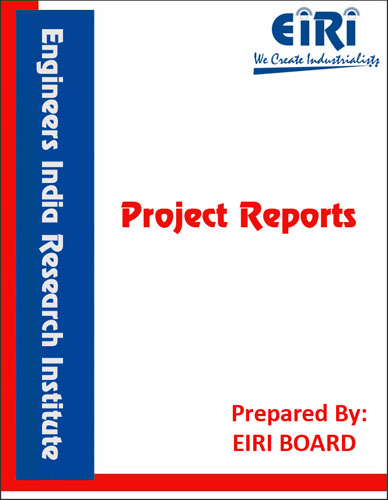EXTRACTION OF PRECIPITATED SILICA FROM RICE HUSK ASH
The project report includes Present Market Position and Expected Future Demand, Market Size, Statistics, Trends, SWOT Analysis and Forecasts. Report provides a comprehensive analysis from industry covering detailed reporting and evaluates the position of the industry by providing insights to the SWOT analysis of the industry.
We can prepare PROJECT REPORT as per your INVESTMENT PLAN for BANK LOAN REQUIREMENT and INDUSTRY ANALYSIS. All reports are prepared by highly qualified consultants and verified by a panel of experts.
Have Query? Click Here to Chat
Industry Expert is Online, Chat with him for more detail.

Rice is the seed of the monocot plants Oryza sativa (Asian rice) or Oryza glaberrima (African rice). It is normally grown as an annual plant, although in tropical areas it can survive as a perennial and can produce aratoon crop for up to 30 years. Since a large portion of maize crops are grown for purposes other than human consumption, rice is the most important grain with regard to human nutrition and caloric intake, providing more than one fifth of the calories consumed worldwide by the human species. The rice plant can grow to 1–1.8 m (3.3–5.9 ft) tall, occasionally more depending on the variety and soil fertility. It has long, slender leaves 50–100 cm (20–39 in) long and 2–2.5 cm (0.79–0.98 in) broad. The small wind-pollinated flowers are produced in a branched arching to pendulous inflorescence 30–50 cm (12–20 in) long. The edible seed is a grain (caryopsis) 5–12 mm (0.20–0.47 in) long and 2–3 mm (0.079–0.12 in) thick. Rice is the staple food of over half the world’s population. It is the predominant dietary energy source for 17 countries in Asia and the Pacific, 9 countries in North and South America and 8 countries in Africa. Rice provides 20% of the world’s dietary energy supply, while wheat supplies 19% and maize 5%. 1-3
Rice Husk
Rice husks are the hard protecting covering of grains of rice. Rice hulls are the coating for the seeds, or grains, of the rice plant. To protect the seed during the growing season, the hull forms from hard materials, including opaline silica and lignin.
One practice, started in the seventeenth century, to separate the rice from hulls, it to put the whole rice into a pan and throw it into the air while the wind blows. The hulls are blown away while the rice fell back into the pan. This happens because the hull isn’t nearly as dense as the rice. These steps are known as winnowing. Later pestles and a simple machine called a rice pounder were developed to remove hulls. In 1885 the modern rice hulling machine was invented in Brazil. During the milling processes, the hulls are removed from the raw grain to reveal whole brown rice, which may then sometimes be milled further to remove the bran layer, resulting in white rice. Rice husk is a by-product of the rice milling industry. It is a unique crop residue with uniform size and high content of ash (14–25%). The silica content of the rice husk ash (RHA) can be as high as 90–98% . This husk can be used as a fertilizer in agriculture or as an additive for cement and concrete fabrication. Due to its high silicon content, rice husk has become a source for preparation of elementary silicon and a number of silicon compounds especially silica silicon carbide and silicon nitride . India is a major producer of rice and finding ways to put the husk to use is imminent. The high silica content in the rice husk ash has attracted interest in discovering ways to use it commercially. Although silica occurs as a component of cells or cell walls in virtually all arial parts of the rice plant, it is most abundant in the husk. Owing to their small diameter, many technological applications, such as thermal insulators, composite fillers, etc., use ultrafine silica powders .We have investigated the possibility of producing high purity silicon from rice husk by purifying the rice husk silica followed by pelletizing and reduction in a modified electric arc furnace. The pelletizing was carried using carbon black as a reductant and sucrose as a binder. The authors concluded that purified RHA could be a potential silica source for solar grade silicon production.
INTRODUCTION
RICE HUSK
USES OF PRECIPITATED SILICA
APPLICATIONS
PRECIPITATED SILICA IS USED IN SILICON RUBBER
FOR FOLLOWING REASONS :
NON RUBBER GRADE PRECIPITATED SILICA
MARKET SURVEY
PATTERN OF REGION WISE GLOBAL DEMAND
GLOBAL DEMAND SUPPLY SCENARIO
COUNTRYWISE EXPORTS OF PRECIPITATED SILICON
WORLD PRECIPITATED SILICA DEMAND
MANUFACTURERS/SUPPLIERS OF PRECIPITATED SILICA
MANUFACTURING PROCESS
TYPICAL PROPERTIES OF PRECIPITATED SILICA
PRINCIPLES OF PLANT LAYOUT
PLANT LOCATION FACTORS
EXPLANATION OF TERMS USED IN THE PROJECT REPORT
PROJECT IMPLEMENTATION SCHEDULES
SUPPLIERS OF PLANT AND MACHINERIES
SUPPLIERS OF RAW MATERIALS
APPENDIX – A :
1. COST OF PLANT ECONOMICS
2. LAND & BUILDING
3. PLANT AND MACHINERY
4. FIXED CAPITAL INVESTMENT
5. RAW MATERIAL
6. SALARY AND WAGES
7. UTILITIES AND OVERHEADS
8. TOTAL WORKING CAPITAL
9. COST OF PRODUCTION
10. PROFITABILITY ANALYSIS
11. BREAK EVEN POINT
12. RESOURCES OF FINANCE
13. INTEREST CHART
14. DEPRECIATION CHART
15. CASH FLOW STATEMENT
16. PROJECTED BALANCE SHEET



